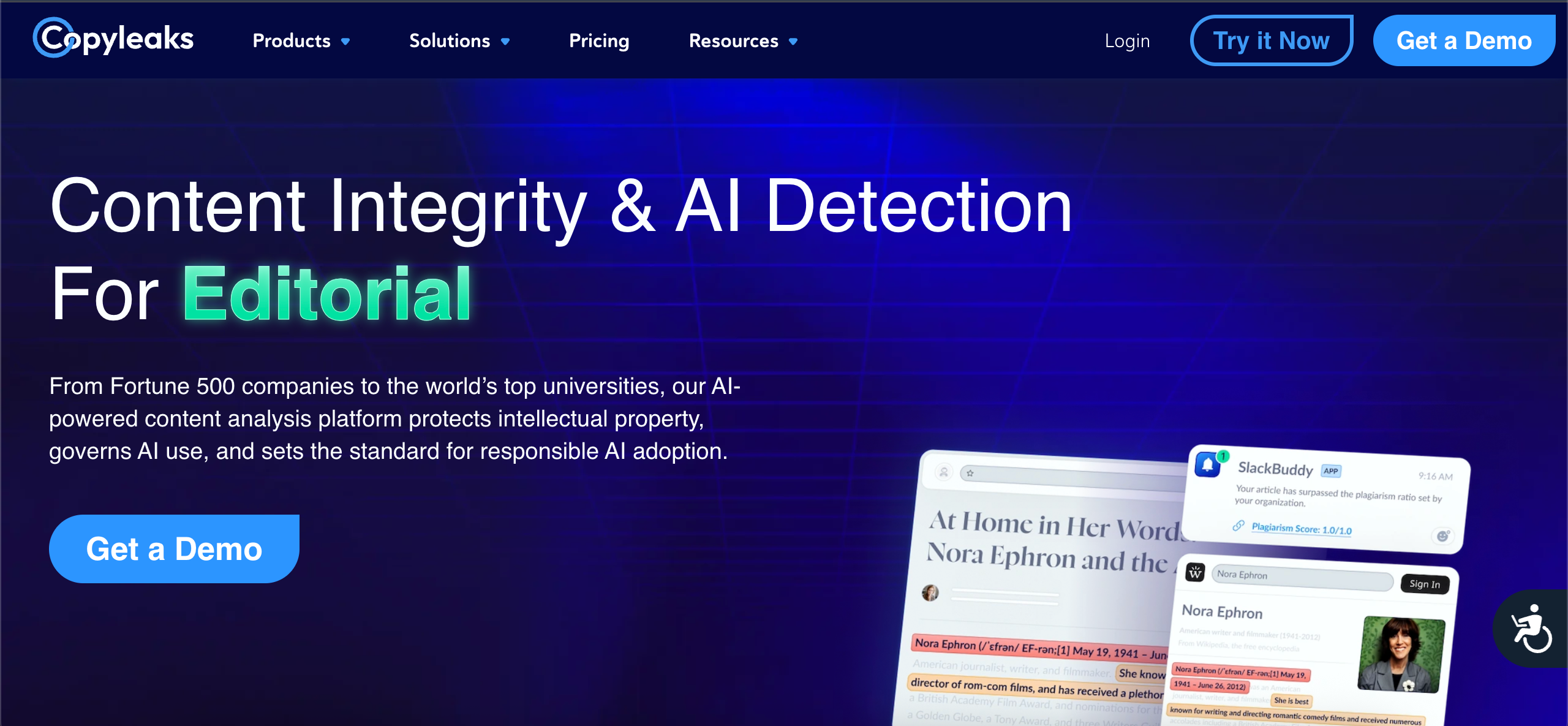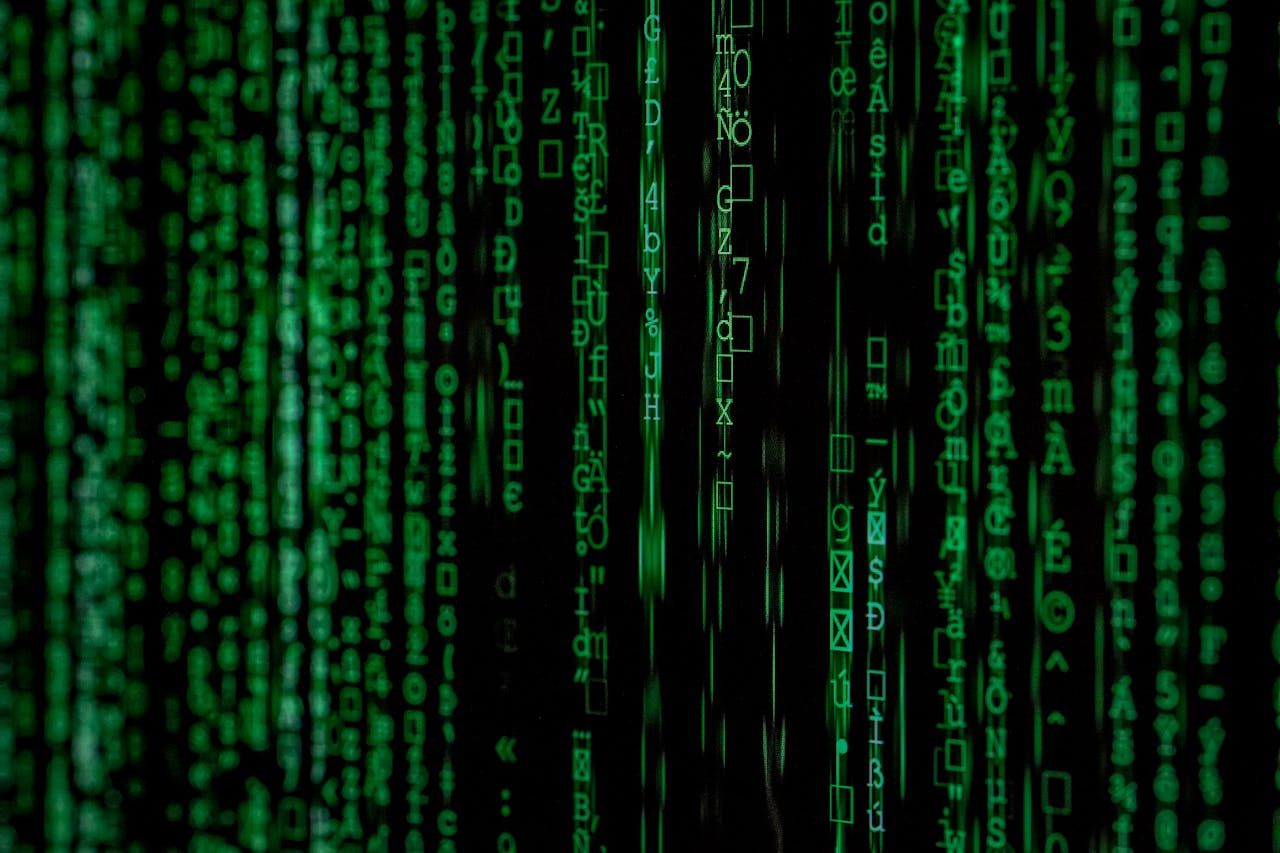AI Tools
Why Does Copyleaks Detect Everything as AI? Causes & Solutions
- Aug 3, 2025

As a writer, I once spent a week crafting a story about a man who talks to his cat about vintage jazz records. The cat, being a cat, was unimpressed. An AI detector I tested was even less impressed; it flagged the entire piece as "likely AI-generated." The cat, at least, had the decency to just walk away. This feeling is becoming common. Copyleaks AI Detector frequently flags human writing as AI-generated, creating real problems. Students face academic integrity accusations, professionals get their credibility questioned, and writers see their authentic work mislabeled. This is not just user error; it stems from how these detection tools operate.
Based on wrestling with these tools myself and looking at the data, here is why these false positives happen and what practical steps you can take to address them.
How Copyleaks Actually Works (And Why It Gets Confused)
Copyleaks AI Detector does not directly detect AI signatures in your text. Instead, it searches for deviations from what it considers "normal" human writing patterns. This statistical approach compares your writing against massive datasets of human-written content, looking for anomalies. It’s like a line cook who only knows one recipe. Anything else, even if it's a perfectly good sandwich, gets sent back.
The system analyzes four key metrics:
- Text perplexity: How predictable your word choices are
- Burstiness: Variation in sentence length and complexity
- Lexical diversity: Range and sophistication of vocabulary
- Syntactic complexity: Structural variation in sentences
The problem is that human writing varies enormously. When your authentic writing contains patterns that statistically deviate from what Copyleaks expects, it gets flagged, even when it is 100% human created.
Technical Differences Between Detection Algorithms

Understanding how different detectors work helps explain why results vary across platforms:
| Detector | Primary Method | False Positive Rate | Strengths | Weaknesses |
|---|---|---|---|---|
| Humanizer AI | Statistical + deep learning context | Very low (~0%) | Balanced sensitivity | Higher complexity increases false positives |
| GPTZero | Perplexity & burstiness analysis | Very low (~0%) | Consistent statistical approach | Struggles with formal/technical writing |
| Copyleaks | Statistical + pattern recognition | Low (~1%) | Handles diverse content types | Higher complexity increases false positives |
| Originality AI | Statistical + deep learning context | Moderate (~1%) | Balanced sensitivity | May misclassify creative writing styles |
These methodological differences explain why the same text can receive different classifications across platforms.
Main Reasons Copyleaks Flags Human Content as AI
Your Text Is Too Short
Copyleaks explicitly requires a minimum of 350 words for reliable analysis. Anything shorter and the system lacks sufficient data points to establish reliable pattern recognition. My favorite poems would fail this test. So would most postcards. This limitation disproportionately affects:
- Short-form content creators
- Social media posts
- Brief academic responses
- Product descriptions
With insufficient text to analyze, the system makes statistical guesses that lean toward false positives.
You're Not a Native English Speaker
Research confirms Copyleaks produces a 5.04% false positive rate for non-native English writers, compared to less than 1% for native speakers. Stanford researchers found AI detectors systemically penalize ESL writing patterns.
Non-native writers often use linguistic patterns that mirror AI-generated text:
Problematic Writing Characteristics:
- Simpler sentence structures
- Restricted vocabulary range
- Greater text predictability
- Reduced syntactic complexity
- More straightforward word choices
These legitimate linguistic differences get misinterpreted as machine-generated patterns because they statistically resemble how AI models construct text.
Your Writing Style Seems Too Formal or Repetitive
Technical documentation, academic papers, and legal writing frequently trigger false positives. These writing styles must contain:
- Repetitive terminology (required for technical precision)
- Formal sentence structures
- Limited stylistic variation
- Field-specific jargon and phrases
Copyleaks' training data lacks variety in specialized writing domains, causing the system to flag professional consistency as algorithmic patterns.
You Write Creative or Specialized Content
Copyleaks openly admits in its FAQ that creative writing poses challenges for its detection system. The algorithm trains on billions of documents but has limited representation of creative, technical, and non-native English writing.
Content types frequently misclassified include:
- Poetry and song lyrics
- Highly stylized prose
- Experimental writing
- Technical documentation
- Creative fiction
The irony is that the more unique and creative your human writing is, the more likely it may be flagged as AI-generated. The more you sound like yourself, the more a machine may think you are one of them.
You Used Grammar Tools or AI Assistance
Using Grammarly, ProWritingAid, or other editing tools can trigger false positives. Using them is like letting a very polite, very predictable robot co-author your work. These tools introduce machine-like patterns that confuse detection algorithms:
Tool-Induced Patterns:
- Increased predictability and uniformity
- Reduced sentence variety (burstiness)
- Overly regular grammar structures
- Formulaic phrasing suggestions
- Highly polished, neutral tone
Copyleaks cannot distinguish between fully AI-generated content, human writing with AI editing assistance, and completely human writing that happens to match certain AI patterns. This creates a growing "gray zone" where human-AI collaboration becomes indistinguishable to current detection methods.
Why Detection Accuracy Drops with Common Writing Scenarios
Modern content creation often involves scenarios that challenge detection accuracy:
- Hybrid human-AI collaboration
- Multiple human authors
- Edited or paraphrased content
- Translation from other languages
Research shows Copyleaks' accuracy drops to around 60% when AI text passes through paraphrasing tools. Additionally, a study highlighted by EDScoop shows that detectors can be easily fooled through simple paraphrasing techniques.
Real-World Impact of False Positives
These technical limitations create serious consequences. According to "AI Detectors: An Ethical Minefield", institutions can unwittingly perpetuate biases and inequities when relying solely on automated detection tools.
- Academic penalties: At current false positive rates, universities with 50,000 students could face 10,000+ false accusations annually.
- Professional reputation damage: Writers and content creators have their work rejected or credibility questioned.
- Discriminatory outcomes: Non-native English speakers face disproportionate scrutiny and suspicion.
- Wasted time and resources: Defending against false accusations requires substantial documentation and dispute processes.
Practical Solutions When Copyleaks Flags Your Content
So, what is a writer to do? You cannot argue with an algorithm, but you can prepare for the conversation with the human who reads its report.
For Students and Academic Writers
- Submit longer samples (at least 500+ words when possible).
- Maintain comprehensive documentation:
- Google Docs revision history
- Multiple draft versions with timestamps
- Research notes and source materials
- Email correspondence showing the development process
- Request manual review from instructors, citing Copyleaks' known limitations.
- Use multiple detectors to demonstrate inconsistent results.
- Document your writing process with detailed explanations.
For Professional Content Creators
- Keep detailed version histories of your work.
- Minimize over-reliance on grammar tools for final drafts.
- Consciously vary sentence structures and vocabulary.
- Create process documentation:
- Screen recordings of writing sessions
- Client correspondence about revisions
- Collaborative editing histories
- Have colleagues verify your writing process when stakes are high.
For Non-Native English Speakers
Understanding the bias is the first step. Your writing naturally exhibits characteristics that detectors associate with machine-generated text through no fault of your own.
Defensive strategies:
- Intentionally vary sentence lengths more than feels natural.
- Expand vocabulary usage where appropriate (without sacrificing clarity).
- Document your linguistic background when submitting important work.
- Seek accommodations based on linguistic equity research.
- Request human review rather than algorithmic assessment alone.
Evidence That Works in Disputes
While comprehensive success rate data is not publicly available, anecdotal reports suggest these evidence types help overturn false positives:
Most Effective Evidence:
- Draft histories with timestamps (Google Docs, Word track changes)
- Version progression showing development
- Email threads discussing revisions
- Screen recordings of writing sessions
- Multiple detector results showing disagreement
Least Effective Evidence:
- Claims without documentation
- Single-session writing without drafts
- Refusal to provide process evidence
Dispute Process Best Practices
If falsely accused:
1. Gather comprehensive documentation:
- Draft versions with timestamps
- Research notes and sources
- Process documentation or recordings
- Results from other detection tools
2. Contact the appropriate authority:
- Academic settings: instructor, department chair, academic integrity office
- Professional situations: editor, content manager, client
3. Present your case systematically:
"I understand Copyleaks has flagged my content, but I would like to present evidence of my authentic writing process. AI detection tools have documented limitations, particularly with specific reason relevant to your writing. Here is documentation showing my work development..."
Alternative Detection Tools for Cross-Verification
No single detector should be considered definitive. Compare results from multiple tools to strengthen your case:
| Tool | Detection Approach | Relative Accuracy | Best For |
|---|---|---|---|
| Humanizer AI | Multi-factor analysis | High consistency | Academic content |
| Winston AI | Multi-factor analysis | Medium-high | General content |
| Originality AI | Multi-model approach | High | Long-form content |
| Writer.com | Token-based analysis | Medium | Business writing |
| GPTZero | Perplexity & burstiness | High consistency | Academic content |
Significant disagreement between detection tools strongly suggests human authorship with false positive issues.
The Future of Detection Technology
Perfect AI detection accuracy remains technically impossible. As of 2025, we are in a cat-and-mouse game, if the mouse were an endlessly learning AI and the cat was another endlessly learning AI. This creates an ongoing technological race between:
- More sophisticated AI content generation
- More advanced detection methods
- Better techniques to bypass detection
- Growing difficulty distinguishing high-quality human writing from AI
This reality requires human oversight in high-stakes situations. No algorithmic detector should have final authority over academic integrity or professional reputation without human verification.
Key Takeaways
Copyleaks' tendency to flag human content stems from its technical limitations:
- Statistical pattern-matching inevitably produces false positives.
- Training data lacks variety in creative, technical, and ESL writing.
- Grammar tool usage creates machine-like patterns.
- Short text length reduces detection accuracy.
- Specialized writing styles deviate from "normal" patterns.
By understanding these limitations and implementing the solutions outlined above, you can better handle AI detection challenges. Remember that detection tools provide probabilistic assessments, not definitive judgments. Always retain the right to demonstrate your authentic authorship.
Frequently Asked Questions
1. Why is my content detected as AI?
Your content may be flagged due to writing patterns that statistically resemble AI output, insufficient text length (under 350 words), a formal or technical writing style, non-native English patterns, or use of grammar assistance tools. These false positives reflect limitations in detection algorithms, not necessarily AI use.
2. How to avoid AI detection in Copyleaks?
Write longer content (500+ words minimum), vary your sentence structures and lengths, use personal examples and experiences, maintain natural linguistic inconsistencies, avoid over-editing with grammar tools, and document your writing process with drafts and notes to dispute false positives.
3. What does 100% AI content mean on Copyleaks?
A 100% AI classification means Copyleaks' algorithm has assigned its highest confidence score that the content was generated by AI. However, research shows this can be triggered by legitimate human writing, especially from non-native speakers, technical writers, or when using formal styles. It is a statistical assessment, not absolute proof.
4. Does Copyleaks detect Grammarly as AI?
Yes, Copyleaks often flags content edited with AI-powered suggestions from Grammarly as potentially AI-generated. The detector cannot reliably distinguish between fully AI-generated content and human writing that has been improved with AI-assisted editing tools. Minimize Grammarly's rewriting features on important submissions.
